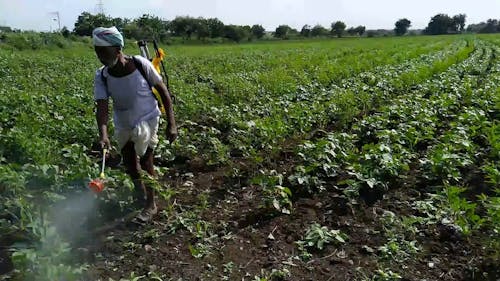All Categories
Featured

It is increasingly evident that pesticides play a crucial role in modern agriculture. However, the collateral damage of these chemicals on wildlife are alarming and warrant investigation. From pollinators such as bees and butterflies to larger mammals like deer and foxes, pesticides have been shown to cause detrimental health effects.
Pesticides, which include insecticides, herbicides, and fungicides, are designed to kill pests and protect crops. Yet, their non-selective nature also affects non-target species through various exposure pathways. Wildlife exposure to these chemicals can lead to acute poisoning, chronic health issues, and even death.
Studies have linked pesticide exposure to a range of adverse effects in wildlife, including disruption of hormonal systems, impairment in reproduction, and damage to nervous systems. For instance, neonicotinoid pesticides, which are widely used due to their effectiveness against pests, have been found to be particularly harmful to bees, affecting their ability to navigate and leading to colony collapse.
Furthermore, the pesticides building up in food chains poses a grave risk to predatory species and can destabilize entire ecosystems. This cascading effect magnifies the original problems posed by pesticides, extending the risk to a wider range of species, including those not initially considered at risk.

Dangers Posed by Pesticides to Wildlife
The various dangers that pesticides pose to wildlife can be seen across various scenarios. Birds, for example, often ingest pesticides directly through treated seeds or indirectly by eating contaminated insects. This exposure can lead to immediate death or chronic reproductive challenges. Studies have shown that certain rodenticides lead to internal bleeding in raptors who consume exposed rodents, pointing out the requirement for more mindful pesticide application practices and tighter regulations.
In aquatic environments, runoff containing pesticides contributes to the pollution of water bodies, affecting a broad spectrum of aquatic life including fish, amphibians, and macroinvertebrates. The decline in amphibian populations, noticeable around agricultural areas, is partly attributed to pesticide exposure, demonstrating the far-reaching impacts of these chemicals on biodiversity.
Continued discussions about the balance between pesticide use and wildlife protection underscore the need for improved pest management solutions. Integrated Pest Management (IPM) approaches, that stress on cutting down on pesticides, offer a more sustainable solution for reducing the impacts on wildlife while still effectively managing pest populations.
Latest Posts
No More Excuses: Powerful Ways to Stay Committed to Exercise
Integrated IT Services for Seamless Operations
Understanding the Impacts of Pesticides on Wildlife